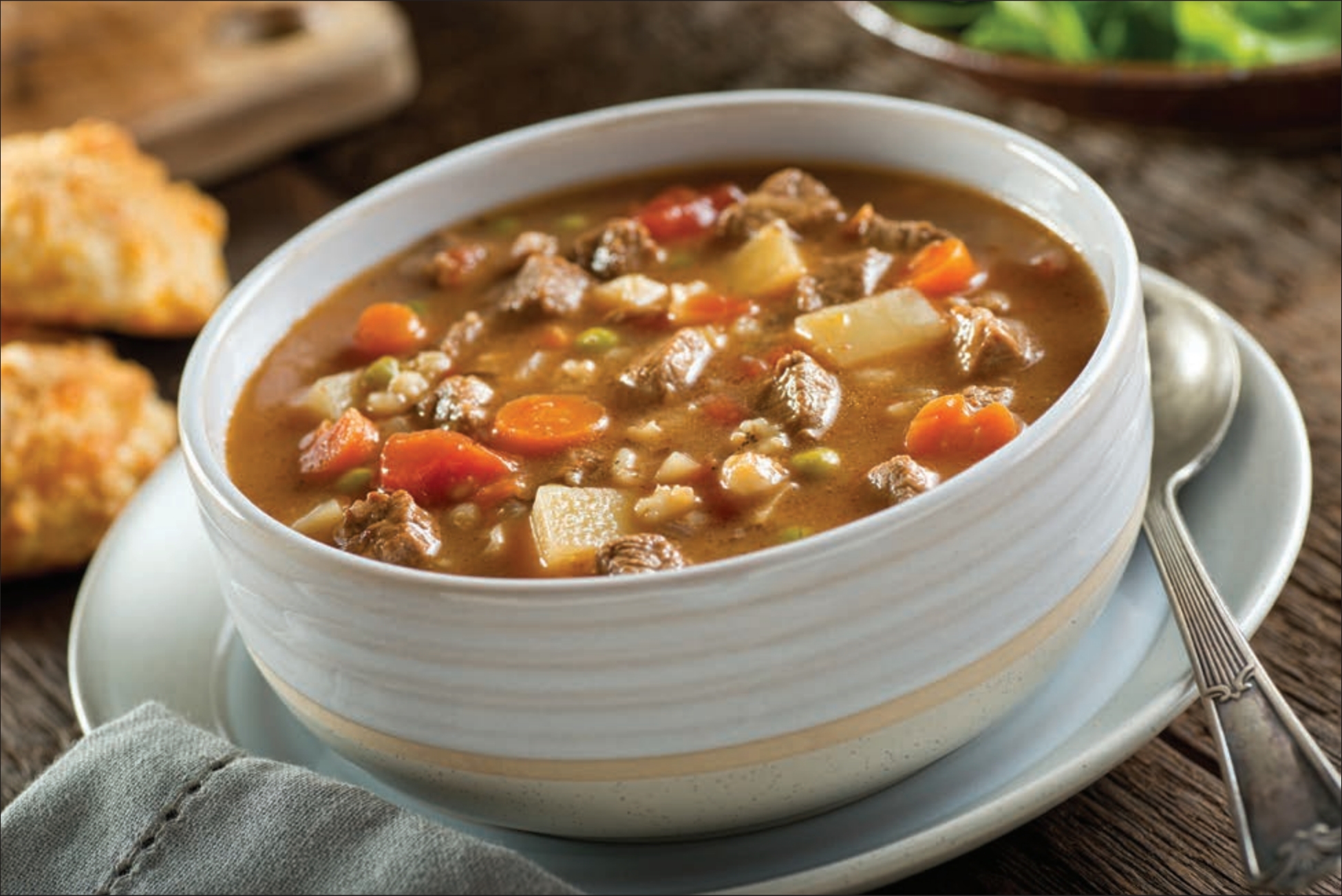Canning Low-Acid Foods: Meat and Poultry in Jars
FNH-00721 View this publication in PDF form to print or download.
By Julie Cascio
Meat and poultry bought from the store, harvested at home or from a recent game hunt can be preserved for longer-term storage through canning in jars.
Meat (bear, beef, caribou, deer, elk, lamb, moose, pork, reindeer, veal, venison and other wild game) can be canned as strips, cubes, chunks, ground or chopped. Poultry (chicken, duck, goose, turkey or other game birds), rabbit and squirrel can be canned with or without the bone.
Only good quality, fresh meat and poultry should be preserved. It is important that meats to be preserved have been stored at refrigeration temperatures, 40°F or below, to prevent deterioration of the meat. For wild game, it is important that the product was field dressed soon after the animal was harvested.
Canning Equipment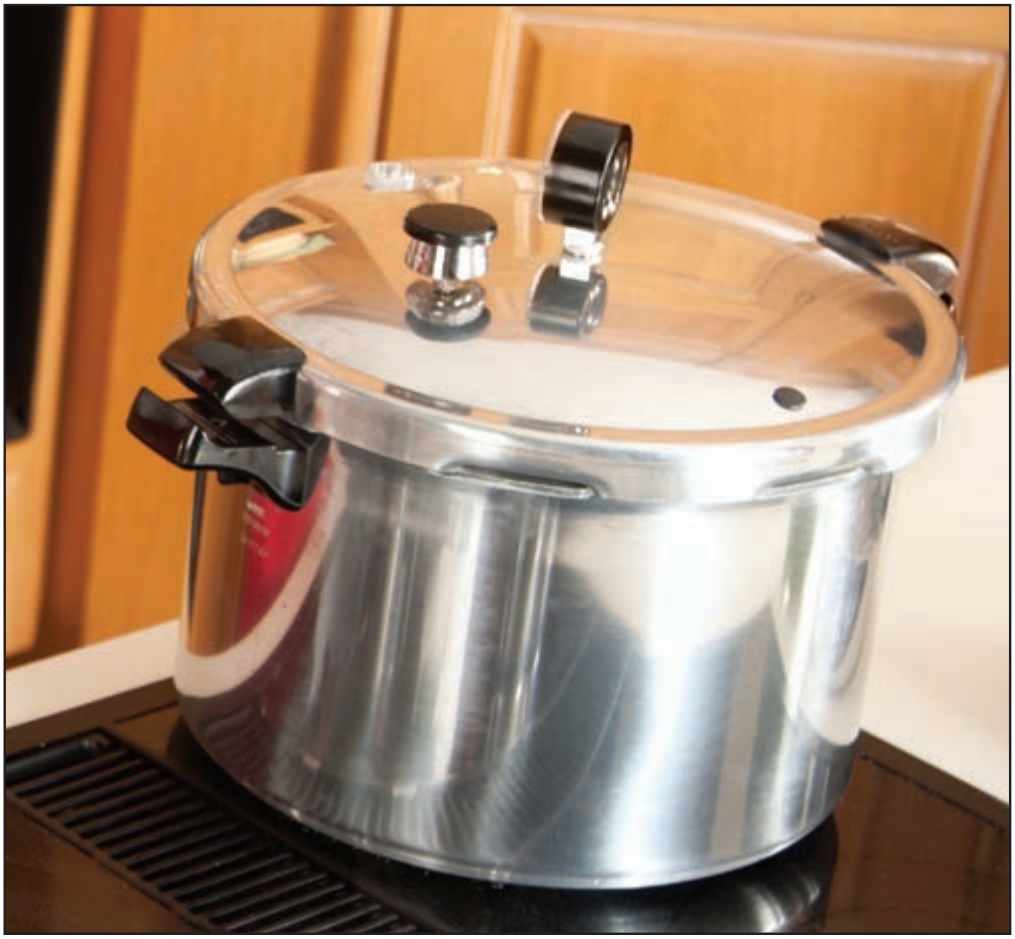
Have all the equipment needed to produce a safe, good-tasting canned product.
A pressure canner is required for processing meat and poultry. The high temperatures reached under pressure are necessary to ensure a safe low- acid product. Meat and poultry have pH values above 4.6 so are low-acid foods.
Read and follow directions for your canner. If you no longer have an instruction manual, look online or write the manufacturer for a new copy.
Your pressure canner must be in good condition. Replace the gasket and safety plug if necessary. Be certain the vent or petcock is clear.
If you have a dial pressure gauge, have it checked for accuracy before the canning season begins. Also, test it if the cover has been under water, dropped, gauge glass is broken or has fallen out, parts are rusty or pointer is not at 0. Dial pressure gauges may be checked at your local Cooperative Extension Service office.
Jars should be washed in hot, soapy water and rinsed before you use them. Check the rims of jars and discard any that have nicks.
Use two-piece, self-sealing lids. Flat lids should be purchased new each year. Screw bands, also called rings, are reusable if they are not bent or rusty. Prepare the jar rings and flat lids by rinsing and setting aside until needed.
An acrylic or hardwood cutting board is recommended to cut down on bacterial contamination. Knives should be sharp.
Meat Preparation
If the meat is frozen, thaw it in the refrigerator before canning. Rinse the meat in cold water. Refrigerate meat until you are ready to prepare it to pack in hot jars. Always clean the area where raw meat was used with hot soapy water, rinse, then sanitize and let dry.
Meat and poultry cut or cubed may be packed hot (precooked) or raw. Ground meat and poultry may only be hot packed. Use the instructions given below for the product you are preparing.
Salt is optional; it is for flavor and is not needed to prevent spoilage. If desired, add ½ teaspoon salt to hot pint jar or 1 teaspoon to hot quart jar.
Release air pockets by inserting a flat thin plastic or rubber spatula between the food and the jar. Slowly turn the jar and move the spatula up and down to allow air bubbles to escape. Adjust the headspace, then clean the rim of the jar with a damp cloth or paper towel.
Place the lid, gasket down, onto the clean jar rim. Add the metal screw band ring. Screw the band down gently with fingertips until you feel it catch. Then do a quarter turn more. If too tight the lid will buckle during processing or form cuts in the sealing compound that prevent sealing.
To ensure the safety of canned meats and poultry, process in a pressure canner. Use researched process time for the meat or poultry you are canning. This is needed to kill all bacteria that cause spoilage or food poisoning.
Adjust for Elevation
Canning instructions are for sea level. Higher elevations need more pounds of pressure to reach the 240°F necessary for killing pathogenic spores. When a dial gauge pressure canner is used, add 1 pound per square inch (psi) pressure for each 2,000 feet above sea level.
- Use 11 pounds pressure at altitude 0 to 2,000 feet.
- Use 12 pounds pressure at 2,001 to 4,000 feet altitude.
- Use 13 pounds pressure at 4,001 to 6,000 feet altitude.
- Use 14 pounds pressure at 6,001 to 8,000 feet altitude.
When using a weighted gauge pressure canner, use 10 pounds pressure at altitude 0 to 1,000 feet. If above 1,000 feet, use 15 pounds pressure.
Using a Pressure Canner
Prepare food as shown in instructions later in this publication. Clean and heat the jars while prepping the food.
- Add 2–3 inches (about 3 quarts) of hot water to the pressure canner. Put the rack in the bottom of canner. Place the closed, filled jars on the rack, apart from each other. Fasten the canner cover securely. Leave the lid vent open. Turn the heat setting to high.
- Heat the canner until steam comes through the open vent in a steady stream. Allow the steam to escape for 10 minutes. This step removes air from inside the canner. This is done so the temperature is the same throughout the canner.
- Close the vent (use a hot pad or mitt) by shutting the petcock or by placing the weighted gauge or pressure regulator (also called a deadweight) on the vent.
- Turn the heat on high. When the pressure reads 11 pounds per square inch (psi) on
the dial gauge or the 10-pound weighted gauge begins to jiggle, begin the timing process
and adjust the heat to maintain a steady pressure. Use correct psi for your elevation.
- Write down the time at the beginning of the process and the time when the process will be finished.
- If the pressure drops below 10 or 11 psi, the timing must begin again from zero minutes. If the pressure rises above 10 or 11 psi, lower the heat on the stove but do not begin timing again.
- Regulate heat to maintain a uniform pressure.
- When processing is complete, remove canner from the heat and allow the canner to air-cool until it is fully depressurized. This takes 30 to 45 minutes. Then slowly remove the weighted gauge or open the petcock. After waiting for an additional 10 minutes, unfasten and remove the canner lid.
- Remove jars from the canner with a jar lifter and place on a towel or rack. Do not retighten screw bands. Let the jars set for 12 to 24 hours to cool.
- Remove screw bands and check lid seals. If the center of the lid is indented, wash, dry, label, and store jars in a clean, cool location. Do not replace screw band. If a lid is unsealed, the product can be refrigerated or reprocessed as before (check jar for defects and use a new lid).
- Canned meat is best if consumed within a year. Do not consume any product that has lost its vacuum seal during storage.
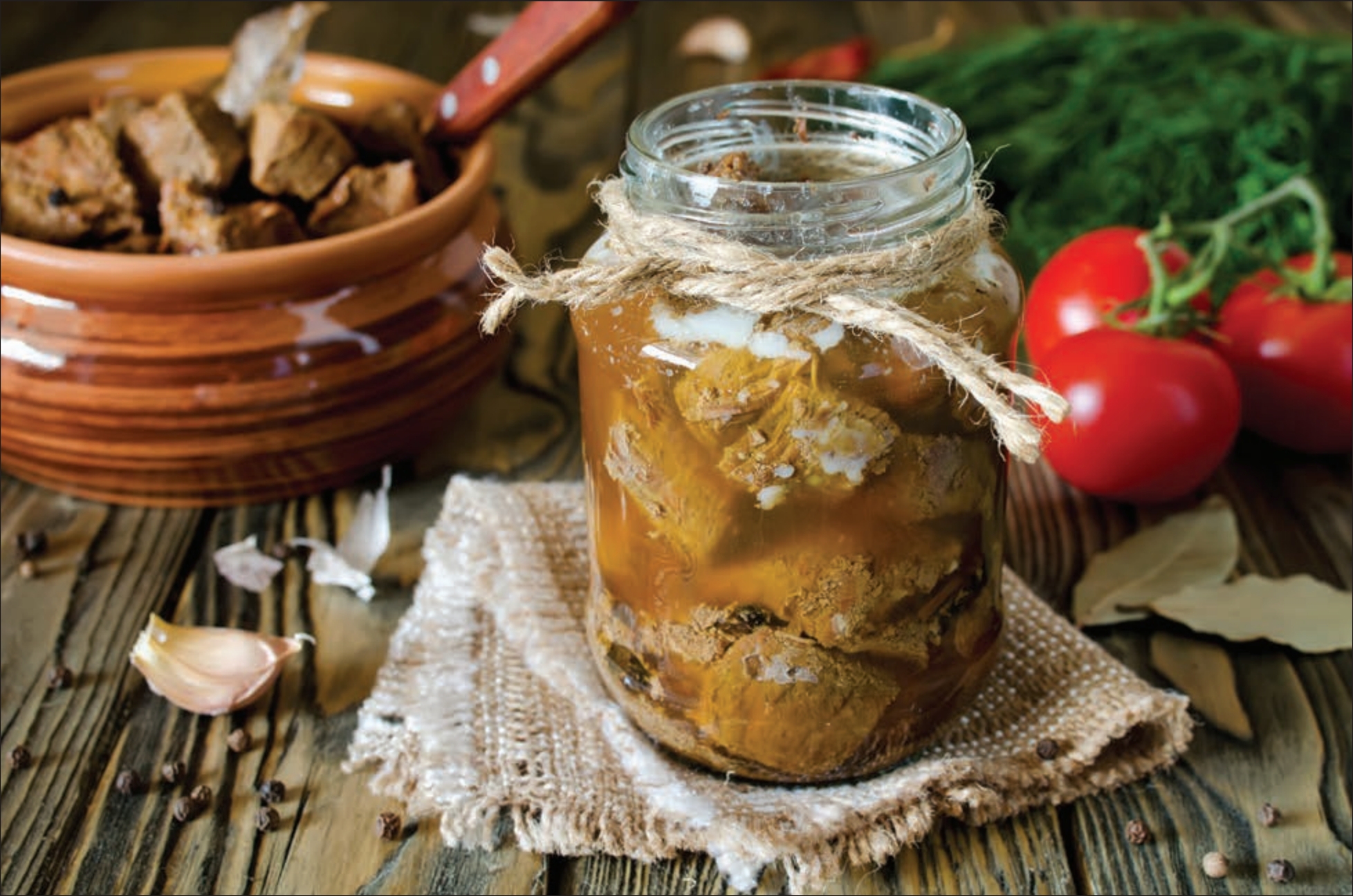
Canning Large Animal Meat
Bear, Beef, Bison, Caribou, Deer, Elk, Lamb, Pork, Reindeer, Moose, Venison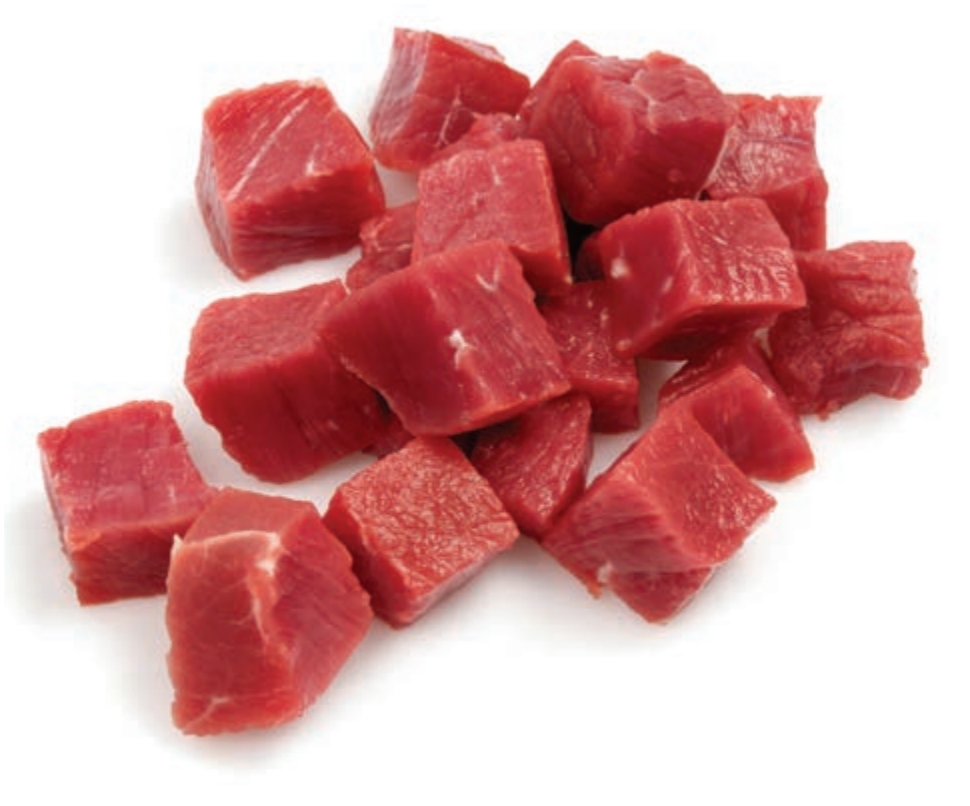
Choose high-quality, chilled meat. Remove excess fat. For strong-flavored wild game, soak for 1 hour in a brine of 1 tablespoon salt per quart of water to help reduce gamey flavor. Drain and rinse.
Remove large bones. Cut into jar-length strips ½ to 1 inch thick or into 1 ½ inch to 2 inch cubes or chunks. Choose hot pack or raw pack method.
To hot pack, precook meat until rare by roasting, stewing or browning in a small amount of fat or oil. Fill hot pint or quart jars with pieces of meat to 1-inch headspace. Add boiling broth, meat drippings, water, or tomato juice, leaving 1-inch headspace.
To raw pack, fill hot pint or quart jars with raw meat pieces, leaving 1 inch of headspace. Do not add liquid.
For both methods, remove air pockets. Wipe rims of jars. Add lids and rings. Place in a pressure canner with a dial gauge at 11 pounds psi or with a 10-pound weighted gauge. If above 1,000 feet, read Adjust for Elevation.
Meat chunks, cubes or strips
- Process 1-pint jars for 75 minutes.
- Process 1-quart jars for 90 minutes.
Canning Poultry and Small Game
Chicken, Turkey, Duck, Goose, Game Birds, Rabbit, Squirrel
Choose freshly killed and dressed healthy poultry, small animals or birds. For fresh game, soak for 1 hour in a brine of 1 tablespoon salt per quart water. Rinse under cold running water. Remove excess fat. Separate at joints. Cut meat into suitable sizes for canning. Can with or without bones. Choose hot or raw pack method.
For hot pack, boil, steam or bake meat until about two-thirds done. Fill hot jars with pieces leaving 11/4-inch headspace, then fill with hot broth to 11/4-inch headspace.
For raw pack, add ½ teaspoon of salt to pint jar, if desired. Fill jars loosely with raw meat pieces, leaving 11/4 inch headspace. Do not add liquid.
For both methods, remove air pockets. Wipe rims of jars. Add lids and rings. Place filled jars with lids into pressure canner with a dial gauge at 11 pounds psi or with a 10-pound weighted gauge. If above 1,000 feet, read Adjust for Elevation.
Poultry or small game without bones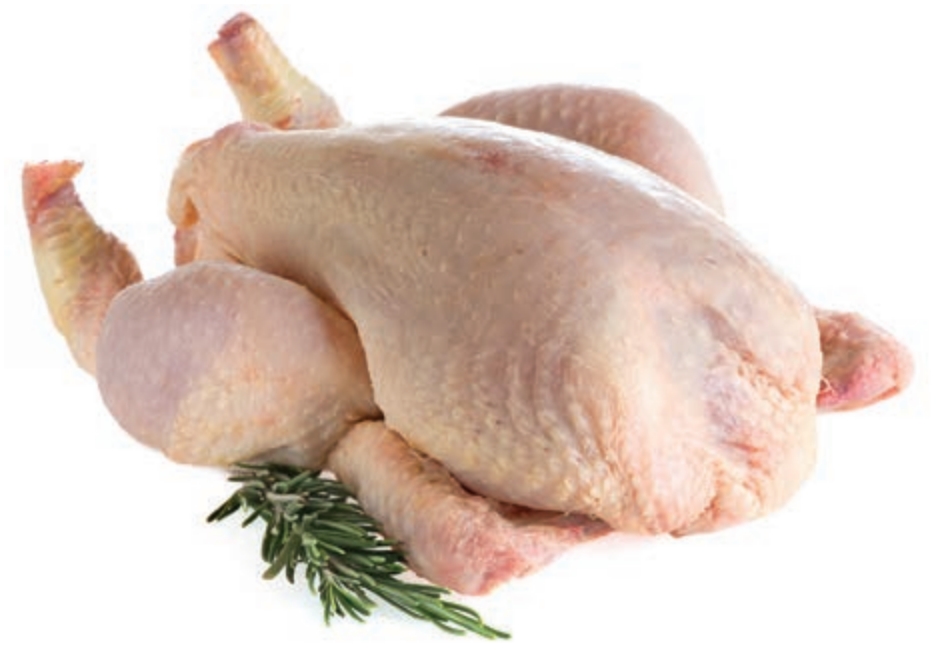
- Process 1-pint jars for 75 minutes.
- Process 1-quart jars for 90 minutes.
Poultry or small game with bones
- Process 1-pint jars for 65 minutes.
- Process 1-quart jars for 75 minutes.
Canning Ground or Chopped Meat
Choose fresh, chilled meat. With venison, add one part high-quality pork fat to three or four parts venison before grinding.
Sauté ground or chopped meat. Another option is to season, then shape into patties or balls. Or make into freshly made sausage, seasoned with salt and cayenne pepper; cut case sausage into 3- to 4-inch links. Cook until lightly browned. Remove excess fat. Fill hot jars with browned pieces. Add boiling meat broth, tomato juice, or water, leaving 1 inch headspace.
Remove air pockets. Wipe rims of jars. Add lids and rings. Place in a pressure canner with a dial gauge at 11 pounds psi or with a 10-pound weighted gauge. If above 1,000 feet read Adjust for Elevation.
Ground or chopped meat
- Process 1-pint jars for 75 minutes.
- Process 1-quart jars for 90 minutes.
Meat Stock (Broth)
Beef: Saw or crack fresh trimmed beef bones (with meat removed) to enhance extraction of flavor. Rinse bones and place in a large stockpot. Cover bones with water. Place cover on pot and simmer 3 to 4 hours. Remove bones and cool broth; skim off excess fat and discard. If desired, remove any tiny amount of meat tidbits still clinging to bones and add back to the broth. Reheat broth to boiling and fill jars, leaving 1-inch headspace. Wipe rims of jars with a dampened clean paper towel.
Chicken or turkey: Place large carcass bones (with meat removed) in a large stockpot. Add enough water to cover bones. Cover pot and simmer 30 to 45 minutes or until any remaining tidbits of meat on bones easily fall off. Remove bones, cool broth and discard excess fat. If desired, remove any tiny amount of meat trimmings still clinging to bones and add back to the broth. Reheat broth to boiling and fill jars, leaving 1-inch headspace. Wipe rims of jars. Add lids and rings.
Place in pressure canner with a dial gauge at 11 pounds psi or with a 10-pound weighted gauge. If above 1,000 feet, read Adjust for Elevation.
Meat Stock or Broth
- Process in 1-pint jars for 20 minutes.
- Process in 1-quart jars for 25 minutes.
Chili Con Carne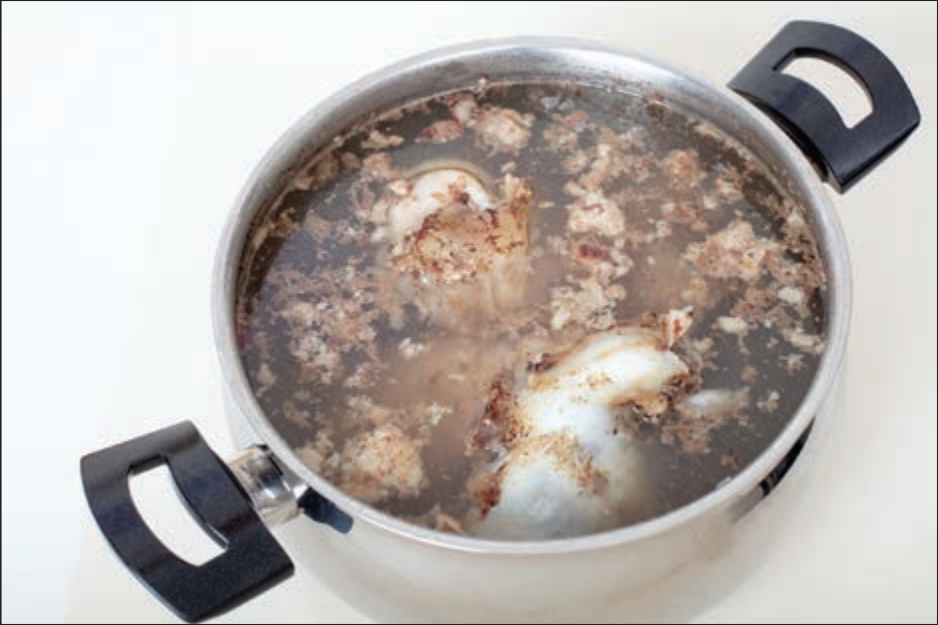
Yield: 9 pints
- 3 cups dried pinto or red kidney beans
- 5 ½ cups water
- 5 teaspoons salt (separated)
- 3 pounds ground beef
- 1 ½ cups chopped onion
- 1 cup chopped peppers of your choice (optional)
- 1 teaspoon black pepper
- 3 to 6 tablespoons chili powder
- 2 quarts crushed or whole tomatoes
Wash beans thoroughly and place them in a 2-quart saucepan. Add cold water to 2 to 3 inches above the beans and soak 12 to 18 hours. Drain and discard water. Combine beans with 5 ½ cups of fresh water and 2 teaspoons salt. Bring to a boil. Reduce heat then simmer 30 minutes. Drain and discard water. While cooking the beans, brown ground beef, chopped onions and peppers in a skillet. Drain off fat and add 3 teaspoons salt, pepper, chili powder, tomatoes and drained cooked beans. Simmer 5 minutes. Caution: Do not thicken.
Fill hot pint jars, leaving 1-inch headspace. Remove air pockets. Wipe rims of jars. Adjust lids. Place in a pressure canner with a dial gauge at 11 pounds psi or with a 10-pound weighted gauge. If above 1,000 feet, read Adjust for Elevation.
Chili con Carne
• Process in 1-pint jars for 75 minutes.
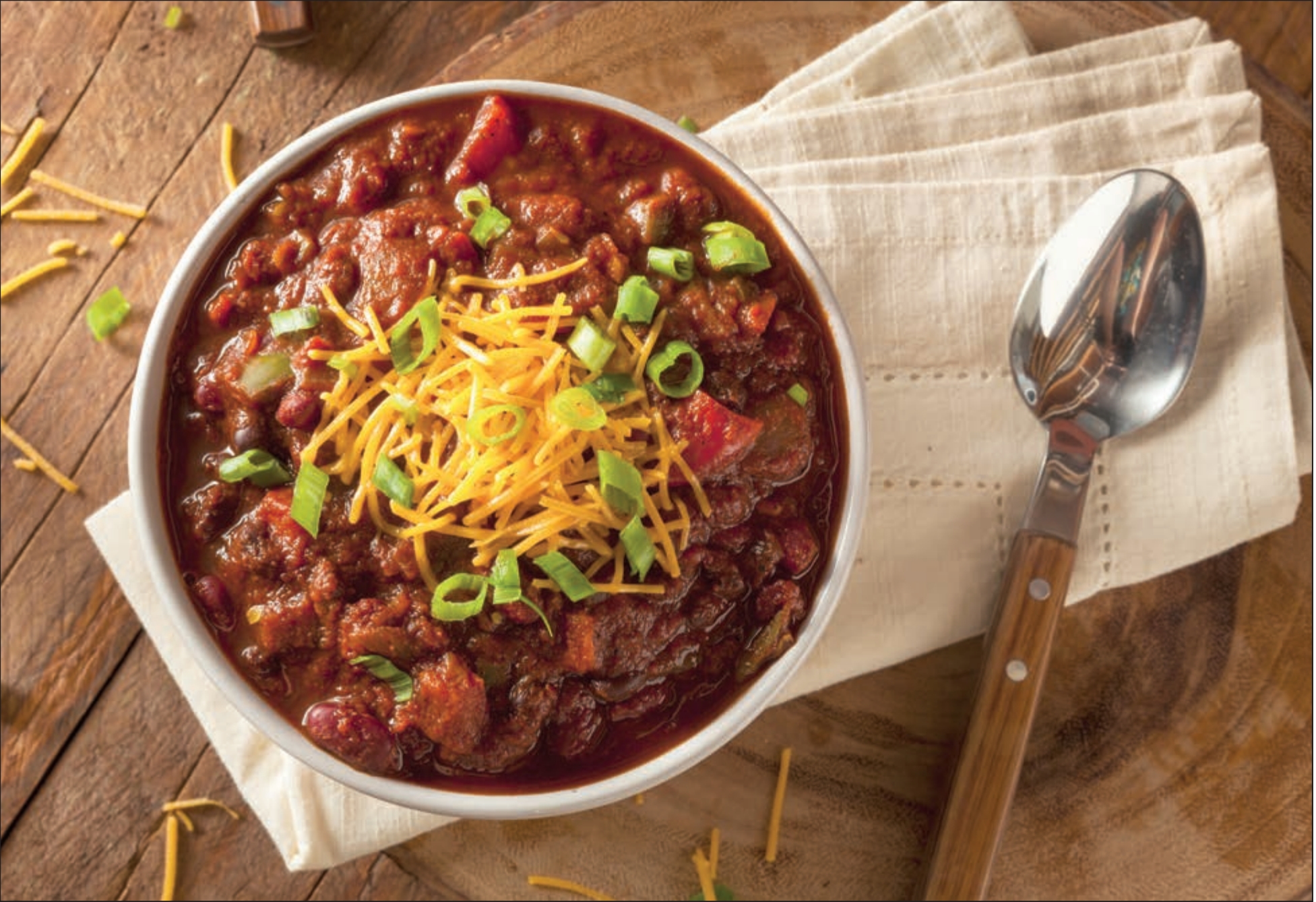
Soups
Vegetable, dried bean or pea, meat or poultry soups can be canned. These directions are intended for use with ingredients that already have separate canning recommendations for those foods.
Caution: Do not add noodles or other pasta, rice, flour, cream, milk or other thickening agents to home-canned soups. If dried beans or peas are used, they must be fully rehydrated first.
Procedure: Select, wash and prepare vegetables and meat as described for the specific foods in their own canning instructions. Cover meat with water and cook until tender. Cool meat and remove bones. Cook vegetables. For each cup of dried beans or peas, add 3 cups of water, boil 2 minutes, remove from heat, soak 1 hour, and heat to boil; drain.
Combine solid ingredients with meat broth, tomatoes or water to cover. Boil 5 minutes. Do not thicken. Fill jars only halfway with mixture of solids. Add remaining liquid, leaving 1-inch headspace. Remove air pockets. Wipe rims of jars. Add lids and rings. Place in pressure canner with a dial gauge at 11 pounds psi or with a 10-pound weighted gauge. If above 1,000 feet, see Adjust for Elevation.
Soup
- Process in 1-pint jars for 60 minutes.
- Process in 1-quart jars for 75 minutes.
References
USDA Complete Guide to Home Canning. Online version: https://nchfp.uga.edu/resources/category/usda-guide. Print version: https://mdc.itap.purdue.edu/item.asp?item_number=AIG-539#.VWTLiZRdWrY
So Easy to Preserve. University of Georgia Cooperative Extension, www.uga.edu/setp
Ball Blue Book. Ball Corporation, Consumer Products Division, Consumer Affairs, 345 S. High, Muncie, IN 47305-2326.
Canning Moose and Caribou, FNH-00226. University of Alaska Cooperative Extension Service, https://www.uaf.edu/ces/publications/database/food/canning-caribou-deer-and-moose.php
Julie Cascio, Extension Faculty, Health, Home and Family Development.
Revised July 2024

